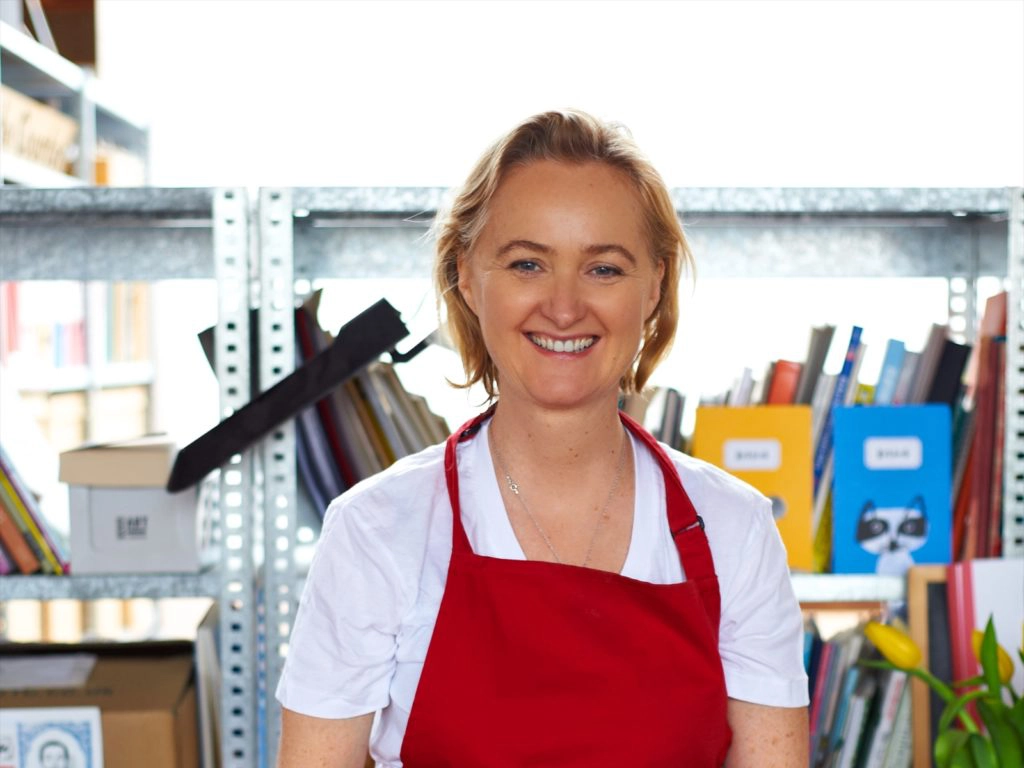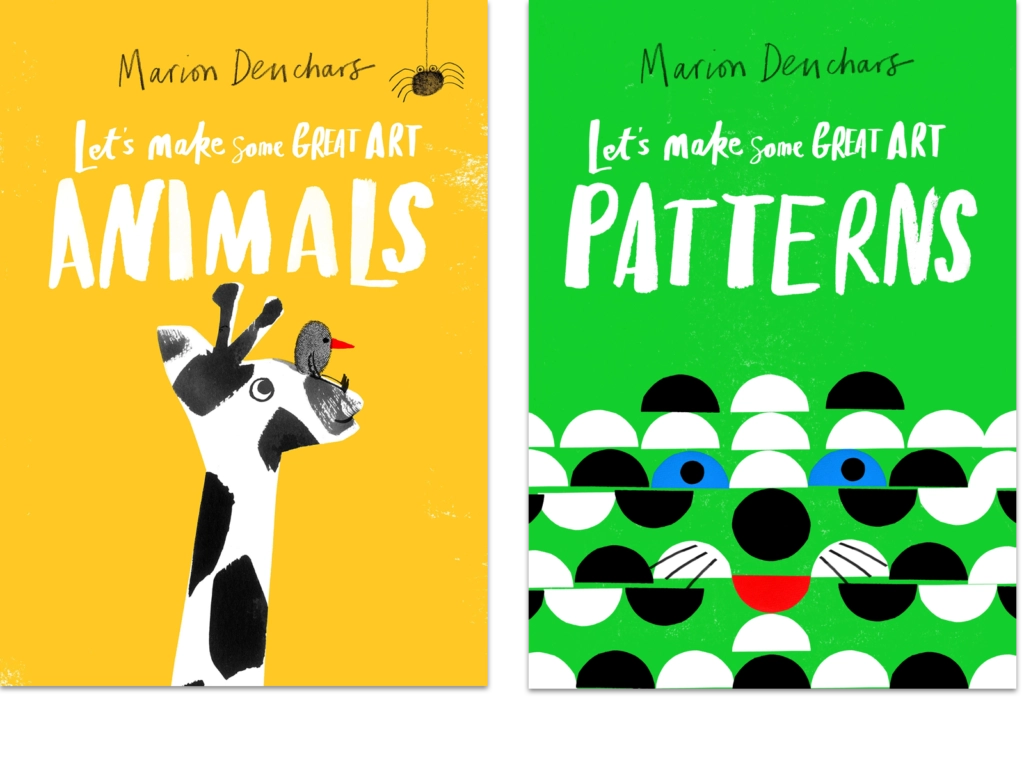Q&A Marion Deuchars
1. What artists/people/cultures have influenced you most?
When I was much younger, my influence came from comics. It was my ‘way in’ to art. I especially loved Tintin.
I think my long lasting influences have been Miro, Calder, Matisse, Philip Guston.
Saul Steinberg is an artist I have looked at a lot for inspiration.
Living in London is also a huge inspiration. I like to be around people bustle. I find the city very stimulating, a visual onslaught.

2. What does creativity mean to you?
To me it means making something for the sake of making, not the end result. I like the process of art, the exploration, the mistakes, the discovering.
3. How do you think we can encourage it in children?
We can encourage it by focusing on the process and not the end result. I tried to encourage my own sons to follow their own path in art and not feel pressurised to make art that looks ‘right’ or polished. To find their own personal voice.
4. What has fueled your creativity over your lifetime?
Many things…fear, ambition, but mainly I think that I feel my best work is ‘around the corner’. That’s why I get up out of bed everyday.
5. Why do you think it’s important that children learn about artists?
I think it’s good to learn about artists on many levels. In an academic way less so when they’re young. There are so many artists and so many ways of making art, that children should be able to relate to at least one of them and think “I could do that”.
6. Do you practice art with your own children? If so, what is the most difficult thing during the sessions, and what do you encourage the most?
I have always practiced art with my children, but I tried not to ‘teach them’. I made a space for art, I left things out that they might pick up; I started some art and watched them copy. Sometimes when they were younger, they would get frustrated with their efforts. Children can be quite critical of their own work. I tried to encourage them to ‘rescue’ drawings they thought were not working. Some examples are by sticking paper on top, painting it out, ripping it up.
When I was developing exercises for some of my books, I used them to test them out. Quite often, they took the activity and developed it into something more interesting. That’s the great thing about kids, they have fewer rules about what you can and can’t do. We can get quite bogged down as adults with our left brain interfering in the creative process. My golden rule to my kids is that “there is not such thing as a bad drawing, it’s just a work in process”.

7. What inspired ‘Let’s Make Some Great Art‘ series?
With Let’s Make Some Great Art I tried to put everything I’d learnt as an artist and at art school into a book form. Many things I do, I take for granted, so I went back and tried to imagine not having an arts education or interest, and put some of those activities into the simplest, most accessible means possible.
8. What do you think is the most important thing for children to take away from the ‘Let’s Make Some Great Art‘ series?
That there are many different ways of making art and that everyone’s art should look different. Many of the exercises allow for much creative expression and individuality. Often at school you can see on the art school walls the same butterfly artwork by 30 pupils. I’m not being critical of the teachers, they have an extremely difficult job and I’m in admiration of what they do, but art (for a multitude of reasons) is often taught in a very prescriptive way.
In the Let’s Make Some Great Art series, I hope children find their own way of making artwork that says something about themselves. There are also many tips and skills in the books that help them to develop that. For example; using everyday items found around the house to print from; marbling; origami; how to draw a bicycle. Confidence can be built around those skills and I always hope they push the work further than the exercise in the books.
9. Which one activity would you recommend for children?
I think a really good first activity to realise the potential of image-making is to paint a multi coloured Rorschach inspired image. It covers many areas; basic mono-printing, using paint, mixing colours and most importantly unpredictability, surprise and making a mess.
10. What do you do to reignite inspiration when it seems to have dried up?
The hardest thing for me to reignite inspiration would be to put a piece of white paper and a pencil in front of me. It’s too scary and intimidating. However, a piece of black paper and a white pen, now that’s different enough to be interesting and less scary. The thing I most often do when I need some inspiration is to ‘play’. I will take some materials I have not used for a while, or something I have not tried before, whether it be coloured paper and scissors, or coloured inks and just play around with them until something interesting happens. It does not have to be finished artwork. One day I spent a whole day making origami coloured paper boats (I’m rubbish at origami). Another time I blew coloured ink through a straw onto white paper which I then turned into creatures with felt tip pens. In a sense, it is returning to the way a child explores art materials, without an agenda. Something unexpected always happens.
